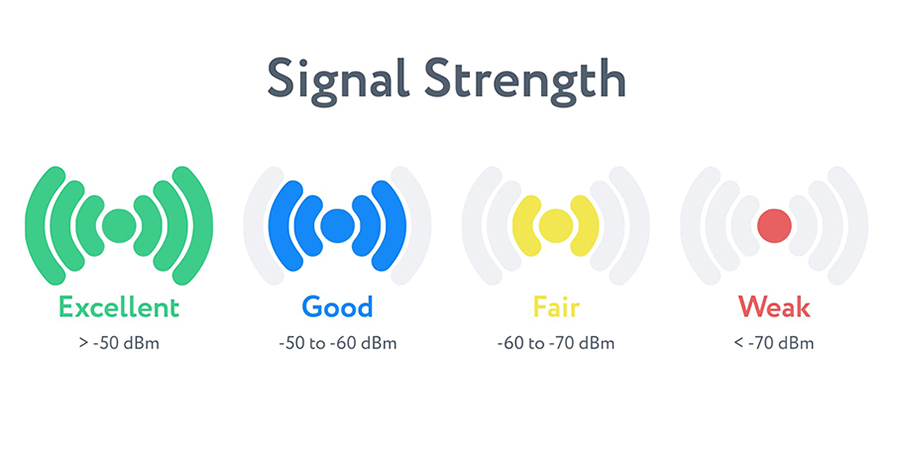When delving into the intricacies of RSSI (Received Signal Strength Indicator) in wireless networks, we must approach it from the vantage point of an Industrial Internet of Things (IIoT) expert. For traditional industries, understanding RSSI goes beyond mere technical knowledge; it's a stepping stone towards embracing intelligence, automation, and the future of communication.
In the vast landscape of wireless networks, RSSI functions as a keen "stethoscope," constantly monitoring and reporting the strength of signals received by devices. Measured in dBm (decibel-milliwatts), RSSI is a negative numerical value that quantifies the energy of wireless signals captured by the receiving end. Simply put, RSSI is the standard that gauges the "loudness" of radio waves, directly reflecting the attenuation of signals during transmission.
In the complex environment of Industrial IoT, wireless devices are ubiquitous, requiring stable and reliable communication to ensure real-time data transmission and efficient system operation. RSSI, as a crucial indicator of signal strength, holds paramount importance. By continuously monitoring RSSI values, engineers can swiftly pinpoint areas with weak signals, optimize network layouts, and minimize communication disruptions and data loss due to signal attenuation.

In wireless communication, RSSI values are inversely proportional to the distance between the transmitting and receiving devices. As the distance increases, signals encounter more attenuation during transmission, leading to lower RSSI values. This characteristic makes RSSI a vital tool for assessing network coverage and optimizing layouts. By strategically positioning devices, RSSI values can be maintained within reasonable ranges, enhancing overall network stability and reliability.
Apart from distance, RSSI is also affected by multipath effects and obstacles. Multipath effects occur when wireless signals encounter reflection, diffraction, and interference, causing changes in signal strength and phase. Obstacles such as walls and buildings can block and attenuate wireless signals. In industrial settings, these factors are particularly complex. By accurately measuring RSSI values and analyzing environmental factors, engineers can develop more effective signal enhancement and interference suppression strategies.
Transmission power and antenna gain are two additional factors that influence RSSI values. Higher transmission power extends signal transmission distance but may increase interference. Conversely, antenna gain enhances signal transmission range and strength without altering transmission power. In IIoT deployments, adjusting transmission power and antenna gain strategically can elevate RSSI values, thereby enhancing wireless network performance.
As IIoT technology advances, RSSI's application scenarios continue to broaden. In indoor positioning, wireless sensor networks, remote monitoring, and more, RSSI plays an indispensable role. By integrating advanced filtering algorithms and positioning technologies, RSSI enables more precise signal strength measurement and location estimation, bolstering the intelligent and automated transformation of IIoT.
Looking ahead, with the emergence of new wireless communication technologies such as 5G, LoRa, and NB-IoT, RSSI's significance as a key signal strength indicator will become even more prominent. Additionally, advancements in algorithms and hardware technology will further enhance RSSI's measurement accuracy and real-time performance, laying a firmer foundation for the widespread adoption of IIoT.
RSSI, as a fundamental parameter in wireless networks, embodies profound technical insights and broad application prospects. For traditional industries, a profound understanding of RSSI's meaning and functions will better equip them to tackle wireless communication challenges, driving the rapid development and proliferation of Industrial IoT.